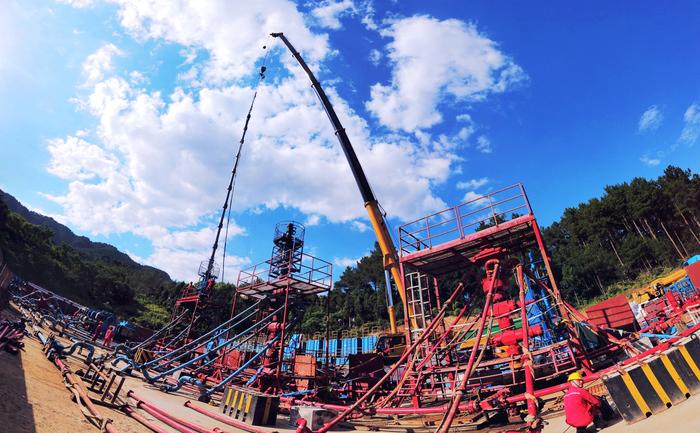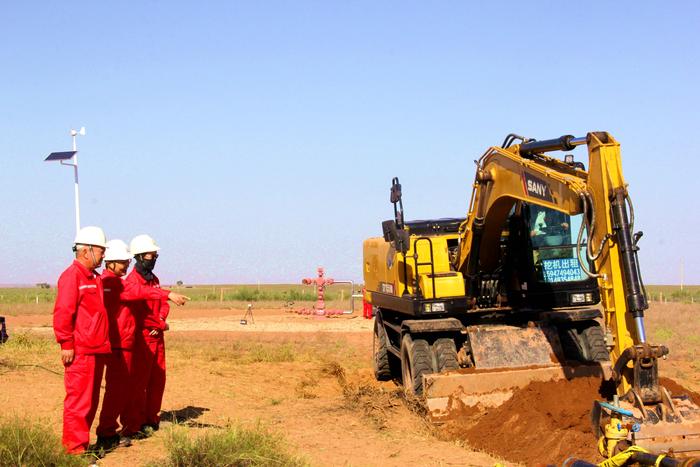|
| 2020-08-05 来源: 中国石化新闻网 |
| 石化新闻 |
中国石化新闻网讯 据油价网伦敦报道,挪威雷斯塔能源公司(Rystad Energy)进行的一次分析结果显示,从8月开始,欧佩克此前减少的石油产量即将部分恢复,这将造成新的4个月大约1.7亿桶石油的供应过剩。雷斯塔能源公司此次分析基于这样一个假设,即由于疫情影响在全球主要市场的持续扩散,或我们所说的温和的第二波疫情,石油需求将不会像之前认为的那样迅速反弹。 在今年前5个月全球石油产量都超过了市场需求以后,6月份全球石油库存只减少了220万桶/天。欧佩克+承诺减产970万桶/天的最后一个月是7月,而7月的需求也将结束惊人超出供应190万桶/天。 雷斯塔能源公司说,但由于温和的第二波疫情已经冲击了几个国家,我们下调了液体 (原油、凝析油、天然气液体、其它液体和炼油厂增产)总需求量在短期内复苏的预期。8月至10月间,全球原油总需求水平将维持在每日9050万桶左右,11月升至9290万桶,12月升至9460万桶。 与需求不同的是,全球石油供应在6月触及8640万桶/天的惊人低点和7月预期的8820万桶/天以后将小幅增长。来自计划的欧佩克+联盟的增产和其它全球关闭生产的复活预计将把8月份供应量增加到9120万桶/天,9月份9250万桶/天,10月份9290万桶/天以及11月份9330万桶/天,供应量在12月份收于9340万桶/天。 雷斯塔能源公司石油市场研究主管Bjornar Tonhaugen表示:“欧佩克从8月开始尝试增产,但可能事与愿违,因为就石油需求而言,我们仍远未脱离困境。整个液体燃料市场将重新出现小幅供应过剩,全球在今年12月之前不会再次出现供应短缺。” 然而,8月至11月全球将创造大约1.7亿桶石油总过剩,与今年前5个月积累的14亿桶石油库存相比,只是九牛一毛。在需求反弹时,这种历史性的库存积累仍将对价格上涨起到软刹车的作用。 Tonhaugen说:“在供应方面,美国提供了非常需要的供应方面的支撑。我们对历史和未来的产量预测都作了重大修改。根据大部分产油大国的初步报告和卫星数据(这些数据让我们了解了压裂活动),我们现在认为,石油产量(原油和凝析油)在今年5月达到了1040万桶/天的底部。 “尽管从现在到9月,美国的石油产量将会上升,但由于压裂活动较低和产量自然递减,我们已经下调了增长预期。预计产量将反弹至1100万至1120万桶/天,然后在今年第4季度和明年第1季度再次降至1070万桶/天,这是因为目前的生产活动水平不足以抵消基数的自然下降。” “此外,我们将伊拉克的石油产量下调了20万桶/天,以弥补过去未能遵守OPEC+的承诺。我们预计,伊拉克7月前20天的石油产量将降至380万桶/天,而我们最初认为其产量很难低于400万桶/天。我们预计,伊拉克石油产量将在10月底前限制在400万桶/天以下,但随后将逐渐回升。” Tonhaugen总结道:“我们怀疑市场能否在不影响油价的情况下接受欧佩克+8月份增加的产量,因为新的供过于求可能会抵消部分涨幅,而这些涨幅曾导致布伦特原油价格在7月创下约44美元/桶的后Covid-19高点。” “我们的平衡表明,如果OPEC+的目标是为了维持油价的复苏,那么欧佩克+到年底的逐步减少计划可能需要搁置。当然,这种情况仍有可能发生,或许一个月后就会发生,这是因为欧佩克的市场监督委员会将按月重新评估市场。 李峻 编译自 油价网 原文如下: Oil Markets Face New Glut As OPEC Prepares To Open The Taps The upcoming partial return of curtailed OPEC+ oil production from August is set to create a new four-month supply glut of around 170 million barrels, a Rystad Energy analysis reveals. The analysis is based on the assumption that oil demand will not rebound as quickly as previously thought due to the persistent expansion of the Covid-19 pandemic in key markets, or what we call a mild second wave of the virus. After the first five months of 2020, which all registered excess global oil production compared to market demand, June was a month when global stocks saw some relief of 2.2 million barrels per day (bpd) of implied oil inventory draws. July, the last month of OPEC+’s record 9.7 million bpd output curtailment commitment, is also set to end with demand surprisingly exceeding supply by 1.9 million bpd. But with the mild second wave already hitting several countries, we scale back our total liquids (crude, condensate, NGLs, other liquids, and refinery gains) demand recovery expectations in the short-term. Between August and October, total liquids demand levels will stay flat at around 90.5 million bpd, before rising to 92.9 million bpd in November and 94.6 million bpd in December. Unlike demand, global oil supply is set for a mini growth rally after reaching an astonishing low of 86.4 million bpd in June and an expected 88.2 million bpd in July. The planned output increase from the OPEC+ alliance and the reactivation of other global shut-in production is forecast to push supply to 91.2 million bpd in August, 92.5 million bpd in September, 92.9 million bpd in October and 93.3 million bpd in November, before closing at 93.4 million bpd in December. “OPEC’s experiment to increase production from August could backfire as we are still nowhere near out of the woods yet in terms of oil demand. The overall liquids market will flip back into a mini-supply glut and a swing into deficit will not happen again until December 2020,” says Bjornar Tonhaugen, Rystad Energy’s Head of Oil Market Research. Nevertheless, the total surplus of about 170 million oil barrels that will be created between August and November is only a fraction of the 1.4 billion-barrel stock overhang that was built up in the first five months of 2020. This historic inventory build-up will still act as a soft brake on price increases when demand rebounds. On the supply side, the US provided a much-needed supply-side buoy. We made major revisions to both our historical and future output projections. Based on preliminary reporting from most of the big oil-producing states and satellite data that give us insights into frac activity, we now believe that oil production (crude and condensate) reached a bottom of 10.4 million bpd in May 2020. While oil production in the US will rise from now and until September, we have revised down our growth expectations due to low frac activity and natural decline. Production is estimated to bounce back toward the 11 million to 11.2 million bpd range and then degrade towards 10.7 million bpd again in 4Q20 and 1Q21 as the current activity level is insufficient to offset the natural base decline. In addition, we revised down Iraqi oil production by about 200,000 bpd as the country makes good on its promise to make up for past missed OPEC+ compliance. Country-wide production will drop to 3.8 million bpd in Jul-20, we forecast, compared to our initial view that its output would struggle to get below the 4 million bpd barrier. We expect to see Iraq oil production capped below 4 million bpd through October but then will see output gradually increase again. “We doubt that the market can take the additional production volumes from OPEC+ from August without negative consequences for oil prices, as the new glut will likely cancel some of the gains that led Brent to post Covid-19 highs of about $44 this month,“ Tonhaugen concludes. Our balances suggest that OPEC+’ tapering plans to year-end may need to be put on hold if the goal is to sustain the oil price recovery. This can of course still happen, perhaps already in a month, as OPEC’s market monitoring committee will be reassessing the market on a monthly basis. |








